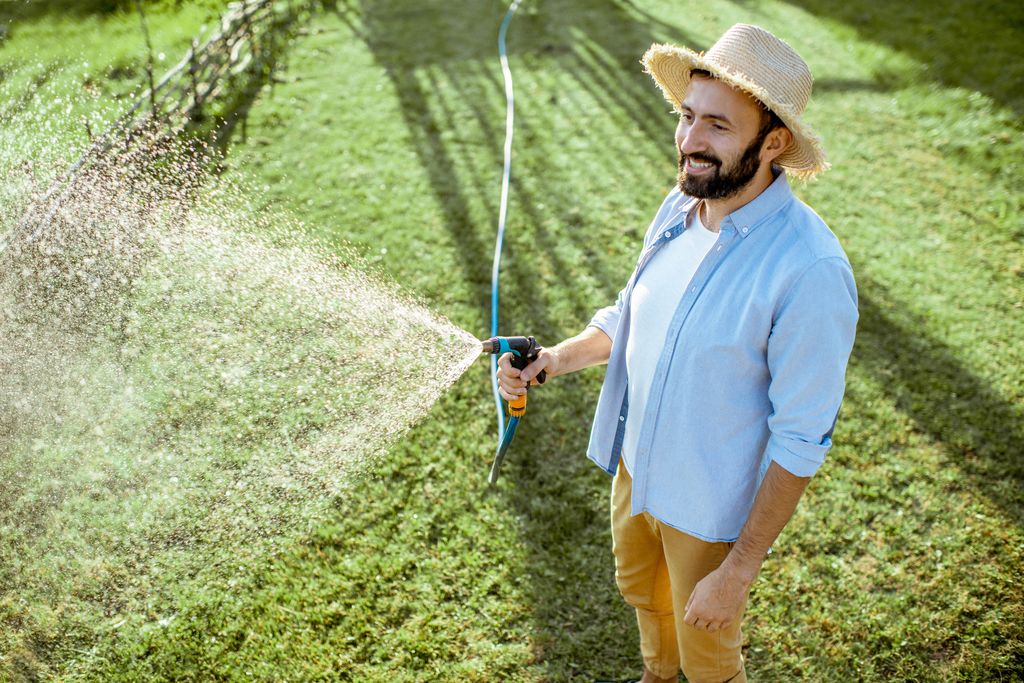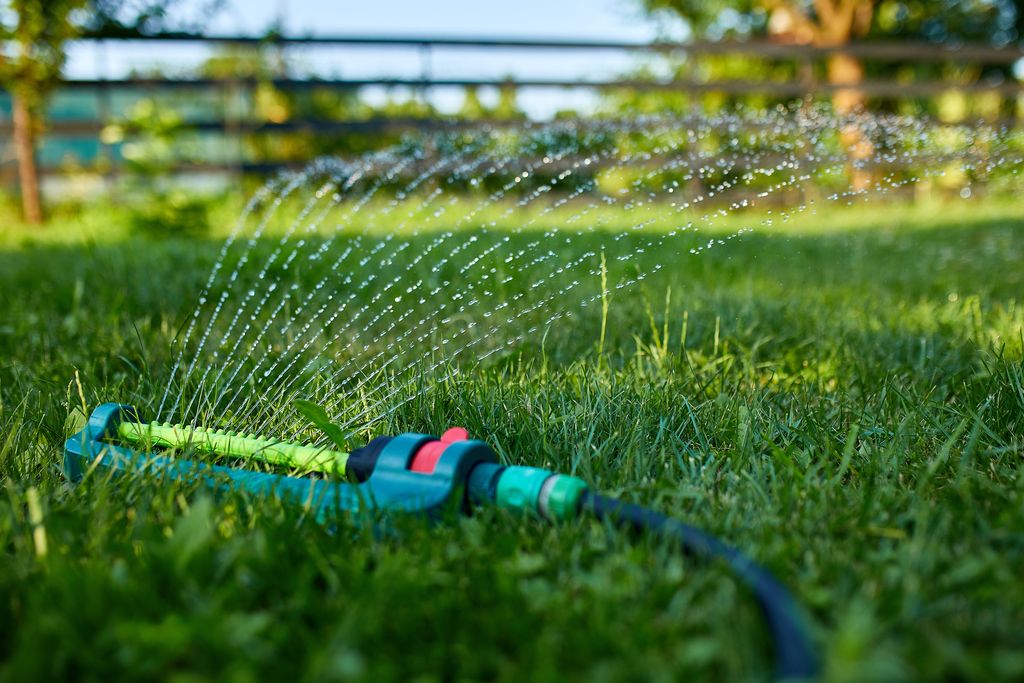- 1. Understand Your Lawn’s Water Needs
- 2. Water Deeply and Infrequently
- 3. Time Your Watering Wisely
- 4. Use the Right Irrigation System
- 5. Monitor Rainfall
- 6. Mulch to Retain Moisture
- 7. Check for Leaks and Malfunctions
- 8. Use Smart Irrigation Technology
- 9. Aerate Your Lawn
- 10. Create a Watering Schedule
- Conclusion
- F.A.Q
This post contains affiliate links. As an Amazon Associate, I earn from qualifying purchases at no additional cost to you.
1. Understand Your Lawn’s Water Needs
Different types of grass have varying water requirements. Warm-season grasses typically need more water during hot summer months, while cool-season grasses thrive with less water during cooler periods.
Here’s a quick comparison:
| Grass Type | Water Needs (inches/week) | Best Season |
|---|---|---|
| Warm-Season Grasses | 1-2 | Summer |
| Cool-Season Grasses | 0.5-1.5 | Spring & Fall |
2. Water Deeply and Infrequently
It may seem counterintuitive, but watering deeply (typically to a depth of 6-8 inches) and less frequently encourages deeper root growth, making your lawn more drought-resistant.
Avoid shallow watering, as it leads to weak root systems. Aim for about 1 inch of water per week, applied once or twice a week.
This strategy helps your lawn develop resilience to drought conditions.
3. Time Your Watering Wisely
The best time to water your lawn is early in the morning, preferably between 5 a.m. and 10 a.m. Watering during these hours minimizes evaporation loss and allows grass blades to dry before evening, reducing the risk of fungal diseases.
You can also water your lawn late in the evening when temperatures are cooler. This is the best to reduce evaporation loss, which can be as much as 30% if watering is done during the heat of the day
4. Use the Right Irrigation System
There are various irrigation methods available, and choosing the right one for your lawn can make a significant difference.
Here’s a breakdown of common systems:
| Irrigation System | Pros | Cons |
|---|---|---|
| Sprinkler System | Even coverage, adjustable | Can waste water if misconfigured |
| Drip Irrigation | Water-efficient, great for gardens | Higher initial installation cost |
| Soaker Hoses | Simple to set up, inexpensive | May not reach deeper roots |
5. Monitor Rainfall
Use a rain gauge to track rainfall in your area. You can install rain sensors into your irrigation system. These sensors automatically turn off your sprinklers during rain or when temperatures drop, preventing unnecessary watering.
Adjust your irrigation schedule based on natural rainfall to avoid overwatering. If you receive an inch of rain, you can skip your scheduled watering to conserve water and prevent overwatering.
6. Mulch to Retain Moisture
Applying a layer of mulch around your plants and grass helps retain soil moisture, reducing the frequency of watering needed.
Organic mulches, like wood chips or straw, also contribute nutrients to the soil as they decompose.
Mulch also suppresses weeds, which can compete for water.
7. Check for Leaks and Malfunctions
Regularly inspect your irrigation system for leaks or broken components to ensures that your system is functioning efficiently and delivering water where it’s needed most. Even small leaks can lead to significant water waste over time.
Check hoses, sprinkler heads, and connections to ensure everything is functioning correctly.
Make sure your sprinkler heads are adjusted to avoid watering sidewalks or driveways. Properly directing water to the lawn can significantly reduce waste
8. Use Smart Irrigation Technology
Investing in smart irrigation controllers can help optimize your Lawn Irrigation.
These devices adjust watering schedules automatically based on weather conditions, ensuring your lawn gets just the right amount of water. It will help you use water more efficiently by skipping watering on rainy days
9. Aerate Your Lawn
Aerating your lawn creates small holes in the soil, allowing air, water, and nutrients to penetrate deeper.
This practice enhances root growth and helps your lawn absorb water more efficiently.
Aim to aerate your lawn once a year, ideally in the spring or fall.
Benefits of Aeration
- Improved Root Growth: Aeration allows roots to breathe, promoting deeper and healthier root systems.
- Enhanced Nutrient Absorption: By creating space in the soil, aeration facilitates better absorption of water and nutrients, reducing runoff and ensuring your grass receives what it needs to thrive.
- Thicker Grass: With adequate aeration, new grass shoots can grow more easily, resulting in a denser and greener lawn that can better compete with weeds.
- Reduced Soil Compaction: Aeration helps to loosen compacted soil, especially in high-traffic areas, allowing for better water infiltration and root expansion.
10. Create a Watering Schedule
Establishing a routine for watering your lawn helps ensure consistency. Use a calendar or a smartphone app to remind you when to water. A well-planned schedule will keep your lawn lush and healthy.
Conclusion
With these ten tips, you’ll be well on your way to mastering Lawn Irrigation and achieving a vibrant, healthy lawn. Remember, understanding your lawn’s needs, timing your watering, and using the right techniques are essential for success.
Don’t hesitate to take action now—your lawn will thank you!



